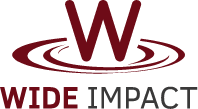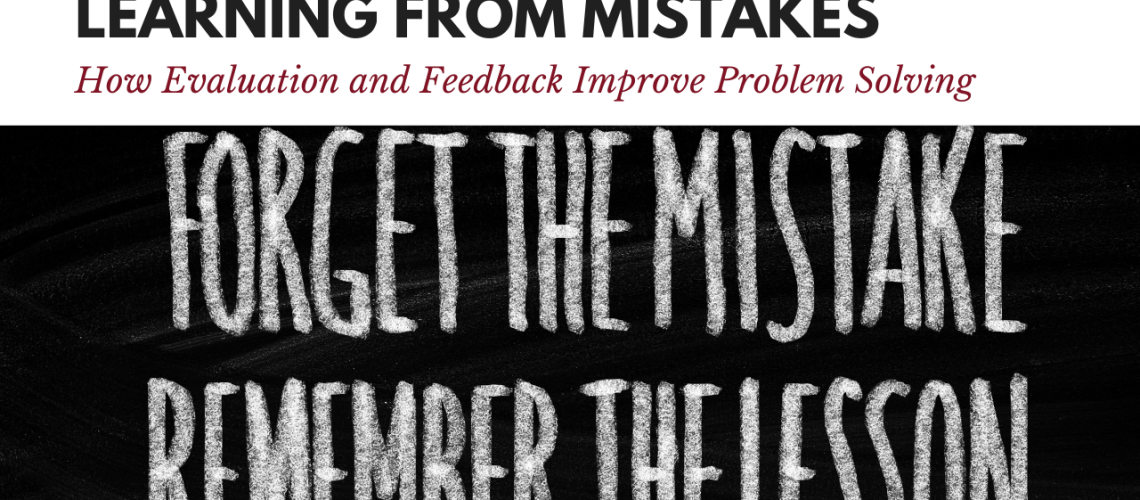By Dr. Salam Slim Saad
Mistakes are a part of life, occurring in various aspects such as work, interactions with friends, and within families. When viewed positively, these errors offer opportunities for personal growth.
Mistakes often spark innovation and improvement. An example is the invention of 3M’s Post-it Notes, which happened when a scientist sought a super-strong adhesive but accidentally created a repositionable one.
Mistakes are not failures; they are stepping stones to success. Thomas Edison, in his quest to invent the light bulb, said, ‘I haven’t failed; I’ve simply discovered 10,000 ways that won’t work.’ Each attempt was a mistake, but it inched him closer to success.
In light of this, it’s evident that we all encounter life’s challenges, but what truly sets us apart is our problem-solving approach. This vital skill not only assists us in overcoming obstacles but also drives our personal and professional growth.
Now, let’s examine how problem-solving mirrors using a master key, unlocking success within the workplace.
The Importance of Problem Solving
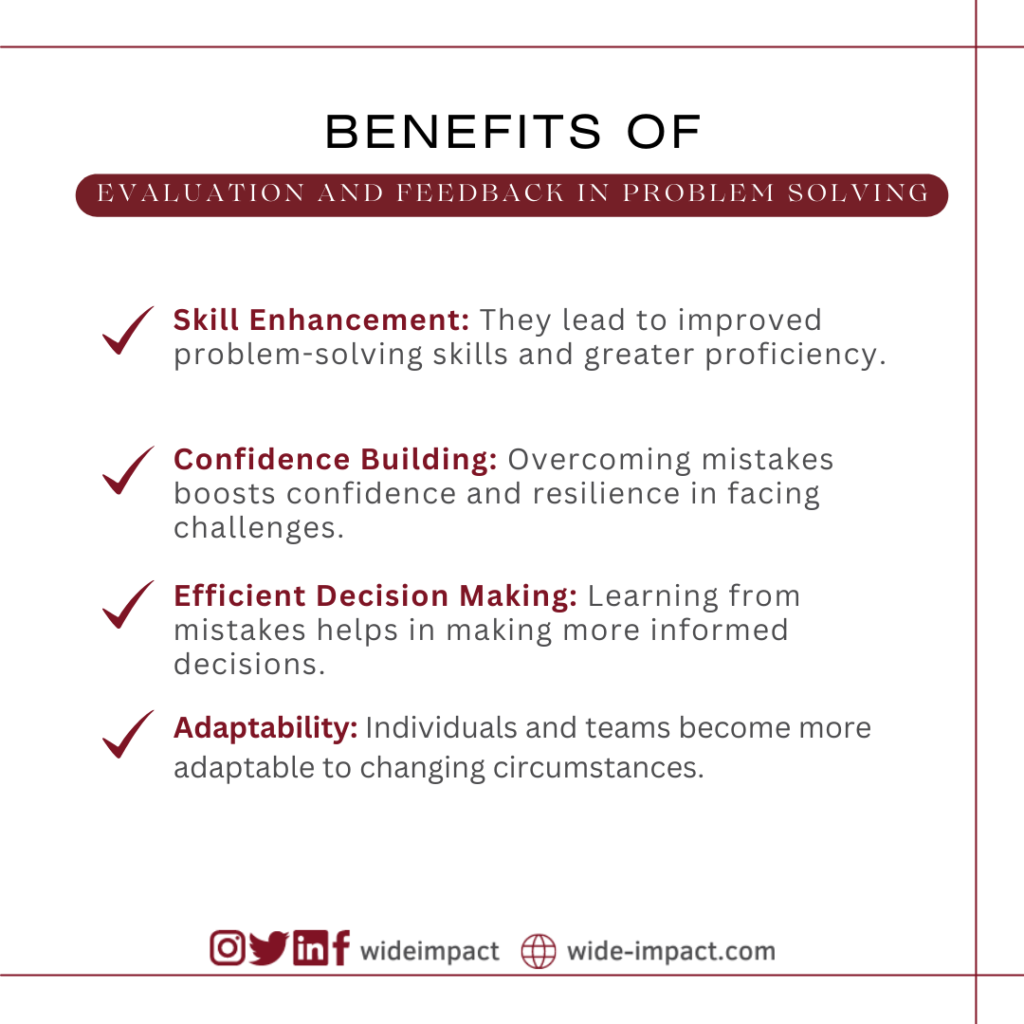
Problem-solving is a vital skill that applies to both work projects and personal challenges. It involves critical thinking and creative solution-finding. Whether dealing with complex work tasks or personal issues, effective problem-solving is essential for success.
- Unlocking Success in the Workplace: Problem-solving serves as a master key to achieving success, especially in the professional arena. For instance, picture a project manager dealing with tight deadlines and unexpected issues. Proficiency in problem-solving enables them to pinpoint root causes, devise effective solutions, and steer the project in the right direction.
- Fostering Creativity and Innovation: Problem-solving isn’t just practical; it also fuels creativity. Think of designers making a groundbreaking product. With a problem-solving mindset, they explore new ideas and find unique solutions.
- Personal Growth and Development: Failing to reflect on past experiences restricts growth as a problem solver. In a professional context, developing a habit of self-assessment after each challenge allows professionals to identify areas for improvement and reinforce successful strategies from the past.
The Role of Evaluation in Problem Solving
Evaluation is vital for effective problem-solving. It means critically analyzing the situation, identifying mistakes or areas to improve, and reflecting on outcomes. Through evaluation, we gain valuable insights to enhance our problem-solving skills.
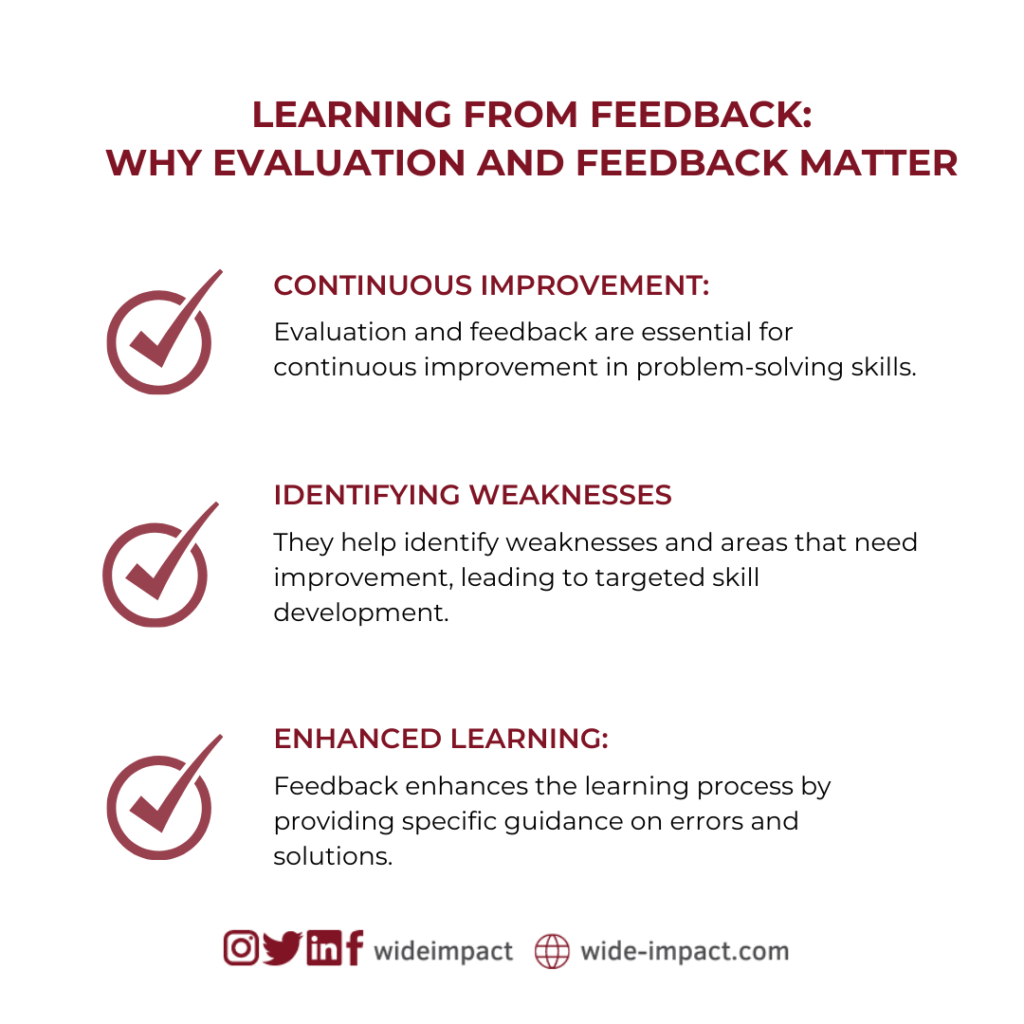
- Enhancing Problem Solving: Consider a project manager handling a complex construction project. When facing unexpected delays and budget overruns, evaluation guides the way. They analyze the situation, identify mistakes, and learn from setbacks. This informs future decisions, enabling resource reallocation, timeline adjustments, and better project management.
- Mistake Identification: One key aspect of evaluation is mistaken identification. Mistakes are not failures; rather, they present opportunities for learning and growth. When we identify our mistakes during the problem-solving process, we can better understand what went wrong and why it happened. This allows us to adjust our approach and avoid making similar errors in the future.
- Navigating Challenges: Consider a team of engineers tasked with developing an innovative solution to reduce energy consumption in a manufacturing plant. Evaluation becomes their compass. They accurately assess various solutions, considering their feasibility, environmental impact, and cost-effectiveness. Through this evaluation process, they identify the most promising solution—an energy-efficient machinery upgrade that addresses the root cause of excessive energy usage.
- Unearthing Underlying Issues: Root cause analysis is another critical component facilitated by evaluation. By examining deeper into a problem’s underlying causes rather than focusing solely on symptoms or superficial issues, we can develop more comprehensive solutions that target the source of the problem directly.
- Ensuring Successful Implementation: Implementation planning also benefits greatly from evaluation. Assessing various factors such as available resources, time constraints, potential risks, or barriers enables us to create realistic action plans that increase the chances of successful execution.
- Feedback Mechanisms: Seeking feedback from peers or experts allows us to gain diverse perspectives on our approaches while receiving constructive criticism that guides further improvements.
The Impact of Feedback on Learning
Feedback is crucial for learning and personal growth. It offers valuable insights into our strengths and areas needing improvement, aiding in mistake identification and necessary adjustments.
If a student receives feedback on a challenging essay they’ve written, they gain a new lens on their performance. This feedback offers an outside perspective they might not have otherwise had, challenging their assumptions and prompting them to reevaluate their approach to writing.
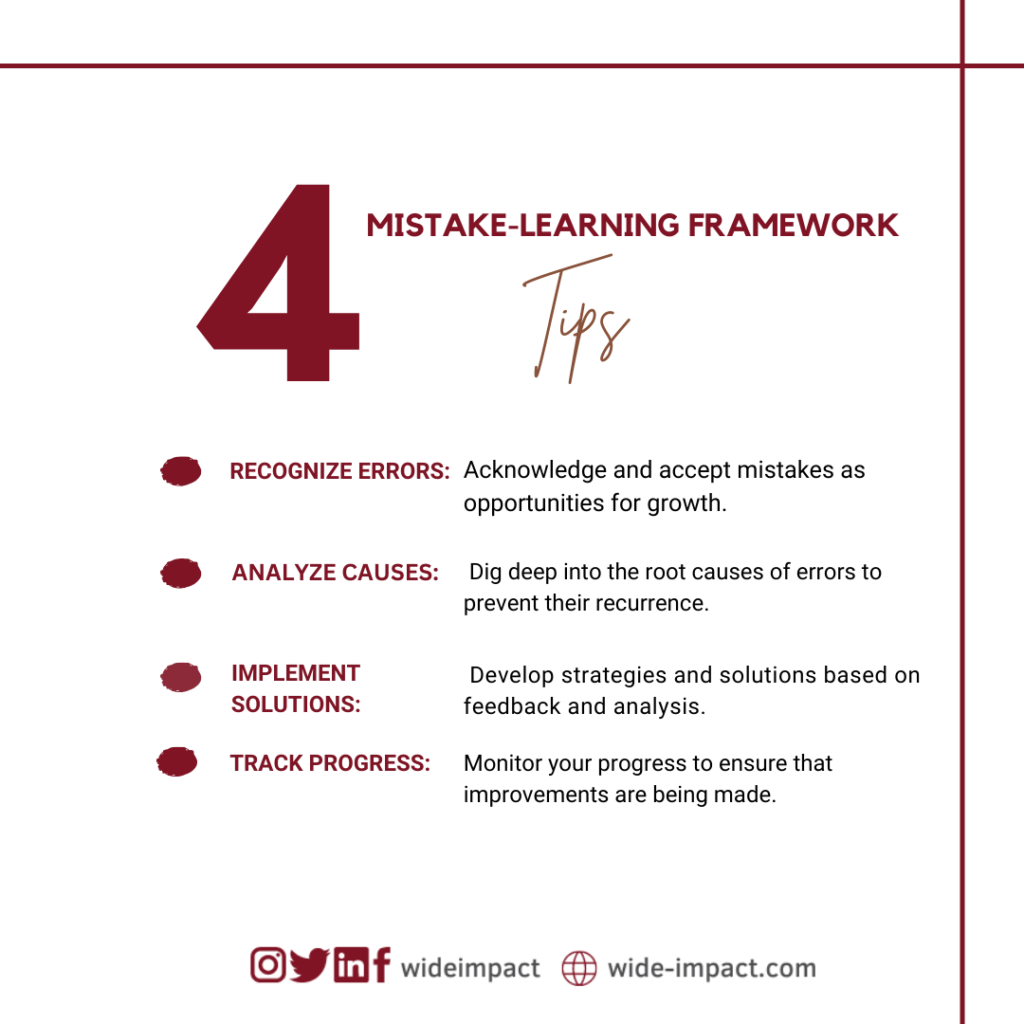
- Feedback is like a mirror, showing us how we act and behave. If a manager receives feedback from their team about their leadership style, they can gain a deeper understanding of how their decisions and actions impact their team’s dynamics. This self-assessment empowers them to develop critical thinking skills as they explore alternative approaches to leadership.
- Feedback is not static; it’s a dynamic force for continuous improvement. Consider a software developer receiving feedback on a coding project. This feedback not only identifies coding errors but also investigates into the root causes behind them. It suggests corrective actions, fostering an iterative process of identifying mistakes and implementing changes. Through this cycle, problem-solving strategies are enhanced, and skills are refined.
- Feedback’s Influence on Collective Intelligence: Consider a project team tackling a complex engineering challenge. Each member offers a unique perspective, making their feedback a catalyst for innovation. By actively seeking diverse viewpoints and integrating them into decision-making, the team harnesses collective intelligence for innovative solutions.
Common Mistakes and Solutions
Effective problem-solving depends on understanding common mistakes that can delay progress. Recognizing these pitfalls enables us to develop strategies for improvement.

- Understanding the Problem Before Seeking Solutions: Imagine a business facing declining sales figures. One common mistake would be rushing to find a solution without fully understanding the problem. Instead of immediately brainstorming ways to boost sales, they take a step back. They analyze the situation thoroughly, gather data on customer preferences, and ask pertinent questions. This approach ensures their efforts are focused on addressing the root causes of the decline rather than merely treating symptoms.
- Critical Thinking: The Key to Informed Decisions: In another context, consider a medical team confronted with a complex diagnosis. Failing to engage in critical thinking during the problem-solving process would be a grave error. They understand the significance of analyzing information objectively, considering alternative perspectives, and weighing potential consequences before making treatment decisions. This mindset allows for a more comprehensive evaluation of treatment options, increasing the likelihood of selecting an effective solution.
- Unlocking the Power of Collaboration: Lack of collaboration is also a significant obstacle in practical problem-solving. Picture a product development team working on a groundbreaking invention. Here, the common mistake might manifest as individuals feeling they have all the answers or hesitating to seek input from colleagues due to ego or fear of criticism. However, by fostering a collaborative environment where diverse viewpoints are valued, innovative ideas emerge, leading to optimal outcomes.
- Controlling the Insights of Feedback: Consider a project manager overseeing a critical IT project. Overlooking feedback mechanisms can hinder progress in problem solving. Here, the common mistake could be not actively soliciting feedback from stakeholders. However, this project manager understands the importance of feedback. They regularly seek input from team members, clients, and end-users, ensuring continuous learning and adjustment based on real-time information.
- Reflecting for Growth: Not reflecting on past experiences limits growth as a problem solver. In a professional setting, taking time for self-assessment after each challenge becomes a habit. This enables professionals to identify areas for improvement while reinforcing successful strategies used previously.
Practical Tips for Better Problem Solving
When it comes to problem-solving, having a clear and structured approach can make all the difference. Here are some practical tips to help you navigate challenges and find effective solutions.
Certainly, here’s a refined list of practical tips for effective problem-solving without duplications:
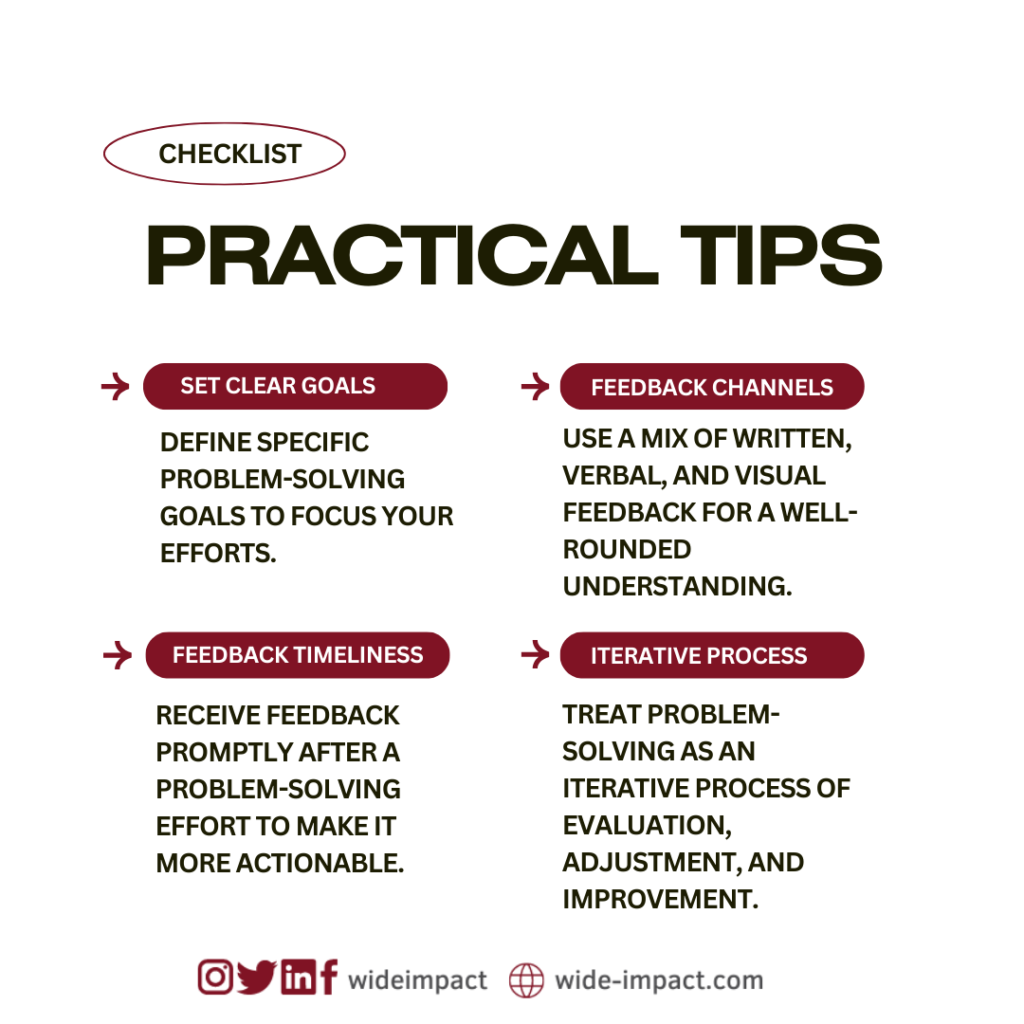
- Identify the Root Cause: Understand the underlying issue by asking “why” to uncover the core problem.
- Generate Multiple Solutions: Brainstorm various approaches, assess their pros and cons, and explore multiple options.
- Plan Your Implementation: Develop a detailed plan for executing your chosen solution, specifying steps, deadlines, resources, and roles.
- Embrace Feedback: Seek input from others to gain valuable insights and perspectives for optimal solutions.
- Continuously Evaluate Progress: Regularly assess the effectiveness of your chosen solution and be open to adjustments or alternative approaches if necessary.
- Prioritize Problems: Assess and prioritize problems based on their impact and urgency, focusing on high-priority issues first.
- Test Small-Scale Solutions: Experiment with solutions on a smaller scale to identify potential issues and make necessary adjustments.
- Use Data and Analytics: Employ data-driven decision-making by collecting and analyzing relevant data to inform your problem-solving process.
- Seek Expert Advice: Consult subject matter experts or experienced individuals for valuable guidance and to avoid potential pitfalls.
- Document Your Process: Maintain a record of your problem-solving journey, including steps, decisions, and outcomes, for future reference and learning.
- Encourage Team Collaboration: Involve team members with diverse perspectives and skills in brainstorming ideas and refining solutions.
- Manage Risk: Assess potential risks associated with your solution and develop risk mitigation strategies for smoother implementation.
- Stay Adaptable: Be flexible and adaptable in your problem-solving approach to adjust as circumstances change.
- Celebrate Success and Learn from Failure: Recognize and celebrate successful outcomes and view failures as learning opportunities.
- Long-Term Impact Assessment: Consider the long-term impact of your solution on your organization or situation to ensure sustainability and lasting benefits.
- Reflect and Iterate: After resolving a problem, reflect on the process and outcomes to identify improvements for future challenges.
The journey to personal and organizational excellence involves acceptance the lessons from mistakes. In the search of excellence, let us remember that every mistake carries with it the potential for growth, and every piece of feedback is an opportunity for refinement. By making these principles part of our organizations, we empower individuals and foster a culture where learning and improvement are valued.
It is our collective commitment to learning from mistakes and fostering a culture of ongoing improvement that will ultimately guide us toward the pinnacle of organizational excellence.

